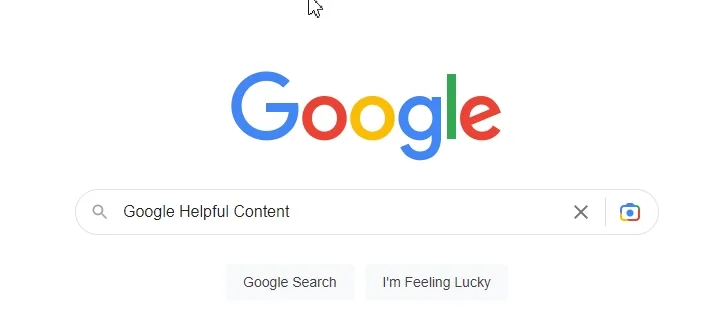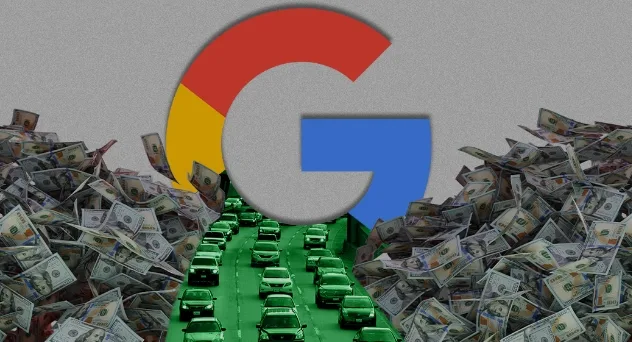Google Helpful Content is the latest update released by Google, which has been available since August 25. It is currently only effective for English language searches, but there are plans to expand to as many languages as possible in the near future.
The purpose of the update is to better position content for users and to make content created less visible to Google and other search engines.
User Content
To help you understand what user content means, Google has provided a series of questions you should answer to assess the quality of articles or pages on your site. Below are the most important of these: Would you trust in the information you added to your article if it wasn’t yours?
- Is the article written by someone who knows the field or topic very well?
- Are there articles on your site that cover the same topic in a superficial manner?
- If it weren’t for your website, would you be comfortable leaving your credit card information?
- Does your website content contain grammatical errors, incorrect data, or typos?
- Does the content add any real value compared to how other sites rank for the same topic?
- Is the content of the article quality checked before it is posted?
- Is the site a recognized authority in this field?
- Does the site have a primary focus?
- Is the content written by a person or is auto-writing software used?
Link between Google Helpful Content and BERT + EAT
For many years, Google has relied on the idea of quality content for SEO and using artificial intelligence systems to understand that content and rank it better. It initially started with Rank Brain which brought the concept of artificial intelligence to Google’s operating algorithm, then there were quality validation updates such as E-A-T (Expertise, Authoritativeness and Trustworthiness) and Medical Update which focused on trust and authority on people/sources of articles or content on the page.
In 2019, Google introduced BERT, an advanced artificial intelligence module that has the ability to fully understand the context, sentiment and entities in a piece of content. Basically, Google has the ability to understand content in an almost human-like way.
Back to the link between these updates and the Google Helpful Content update, we now have just one “add-on” that will check the countless articles and pages that use keyword loaded descriptions, keyword stuffers, etc.
How do I prepare for the Helpful Content update?
The fact that the update only runs for English searches is an advantage in other markets that have more time to prepare, but if you work or do SEO in an area where it has an effect here’s what you should do:
- Audit the content on your site and see if it’s adding value or just adding to the rankings. If it’s just for ranking, see if you can modify it to add value, use FAQs where they make sense. For articles, find out what questions your readers are searching for and think of them as a good source of information. Tools like AHREFS, SEMrush, Alsoaked and Answer The Public give you this data, which you can use to provide answers to all your questions.
- Focus your article on one topic, don’t follow more than one, and provide all the information you can for it.
- Prove that you have authority and expertise in the field you are addressing. In your blog, use the blog outline and add the Persona tag to give the engine additional information about the authors. Develop an author page with as much information as possible about the author, biography, Linkedin, etc.
- Use external references and sources to reinforce the article’s authority and expertise. Don’t be afraid to do link building for other articles, it will help you too if the references are valuable and useful to the readers.
- Understand the intent behind a search. These days it’s not enough to have a list of words with high search volume, it’s important to understand the intent behind it to see what Google users want to find from their searches. The easiest way to do this is to perform Google searches yourself and see what results you get and what information the sites on the first page provide.
- LSI (Latent Semantic Indexing) refers to adjacent words that generally appear in articles/pages with the chosen topic. These can be used in your article as a “strategy” keyword. You can also use tools to show you LSI words.
What do I do if I notice a drop in ranking after the update?
If you were caught by surprise by the update, you should do the same as if you were preparing for the update:
- Rate the content
- Replace content written to rank better with content that brings value to users.
- Being an automatic module, it will check the site over a longer period of time to make sure you don’t fall back into old habits. Google mentions a period of 6 months before the content returns to better performance.
Conclusions
Even if the update to Google Helpful Content algorithm doesn’t seem like a big deal at first glance, it’s a sign that Google is putting more and more emphasis on quality content and rankings.
We are moving more and more into an area of natural SEO, where manipulation of keywords or even topics loses its value, and the quality and information provided to users becomes more important.


